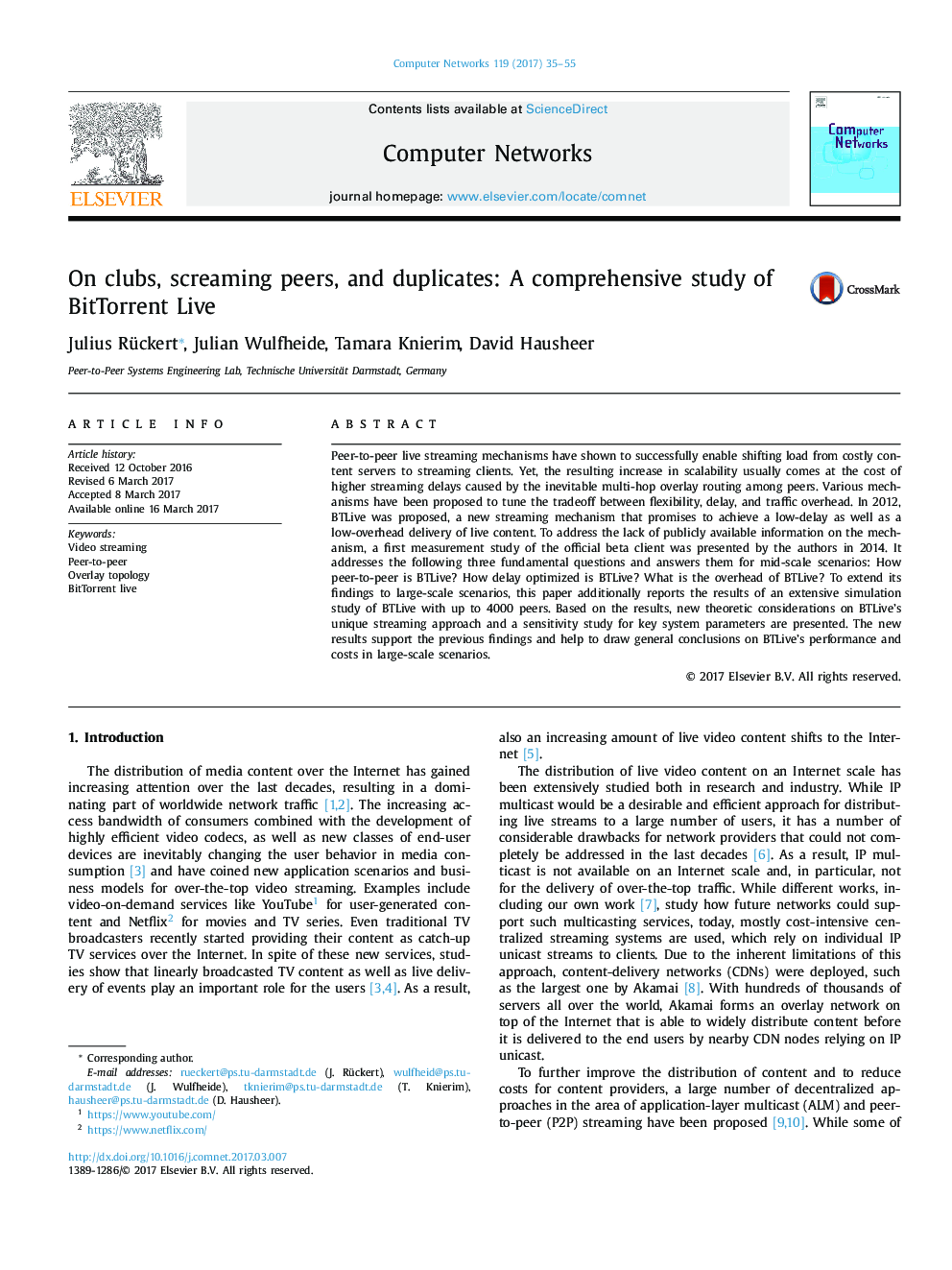| Article ID | Journal | Published Year | Pages | File Type |
|---|---|---|---|---|
| 4954786 | Computer Networks | 2017 | 21 Pages |
Abstract
Peer-to-peer live streaming mechanisms have shown to successfully enable shifting load from costly content servers to streaming clients. Yet, the resulting increase in scalability usually comes at the cost of higher streaming delays caused by the inevitable multi-hop overlay routing among peers. Various mechanisms have been proposed to tune the tradeoff between flexibility, delay, and traffic overhead. In 2012, BTLive was proposed, a new streaming mechanism that promises to achieve a low-delay as well as a low-overhead delivery of live content. To address the lack of publicly available information on the mechanism, a first measurement study of the official beta client was presented by the authors in 2014. It addresses the following three fundamental questions and answers them for mid-scale scenarios: How peer-to-peer is BTLive? How delay optimized is BTLive? What is the overhead of BTLive? To extend its findings to large-scale scenarios, this paper additionally reports the results of an extensive simulation study of BTLive with up to 4000 peers. Based on the results, new theoretic considerations on BTLive's unique streaming approach and a sensitivity study for key system parameters are presented. The new results support the previous findings and help to draw general conclusions on BTLive's performance and costs in large-scale scenarios.
Keywords
Related Topics
Physical Sciences and Engineering
Computer Science
Computer Networks and Communications
Authors
Julius Rückert, Julian Wulfheide, Tamara Knierim, David Hausheer,
